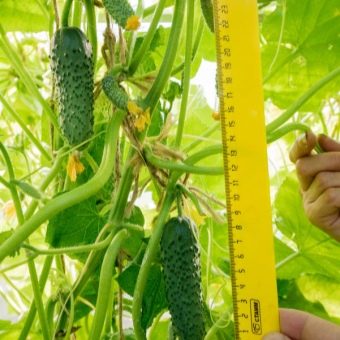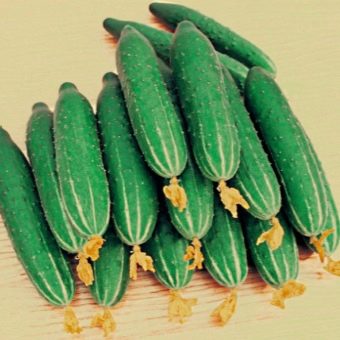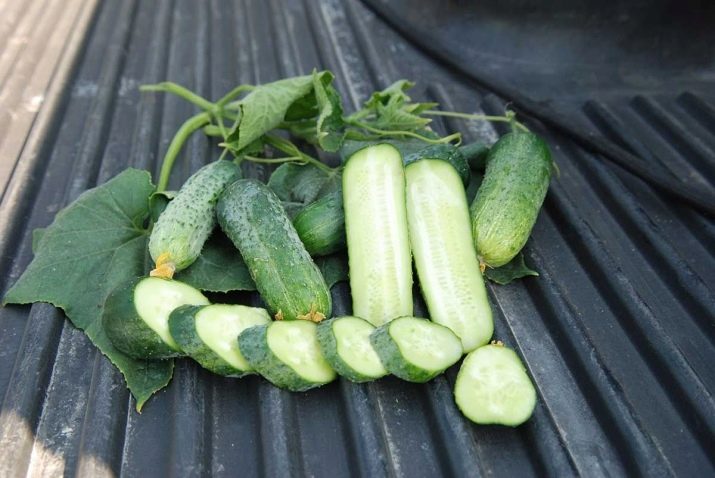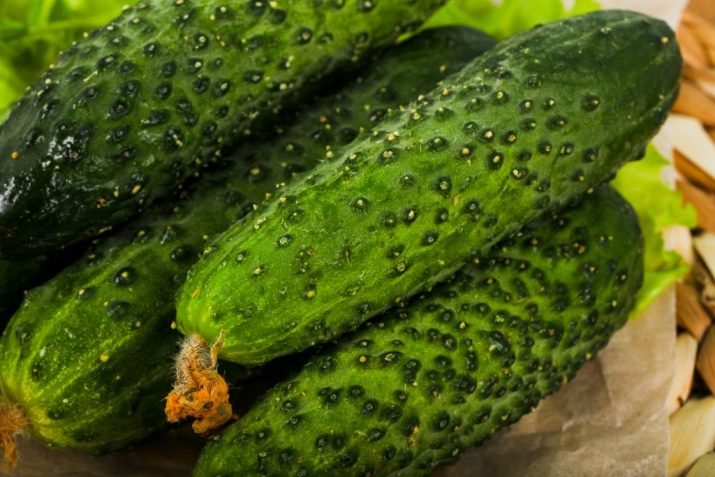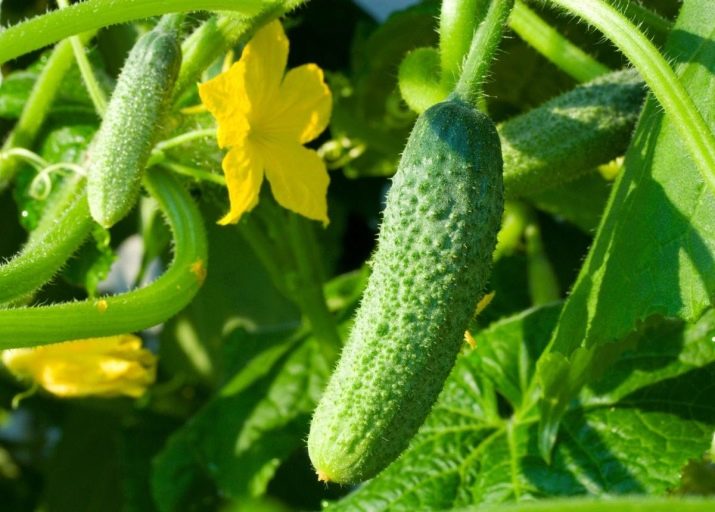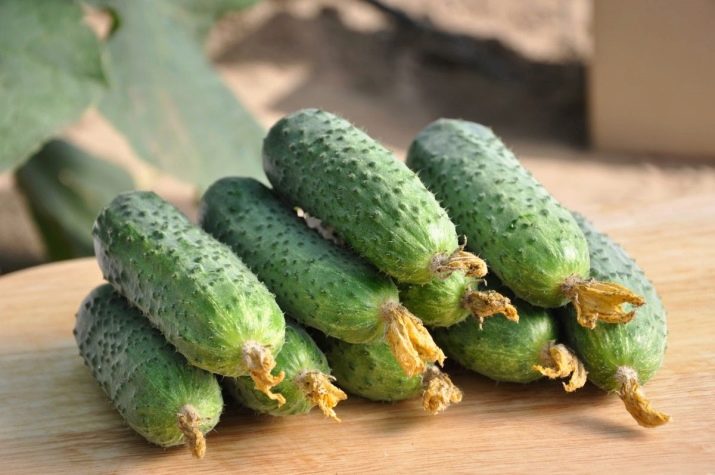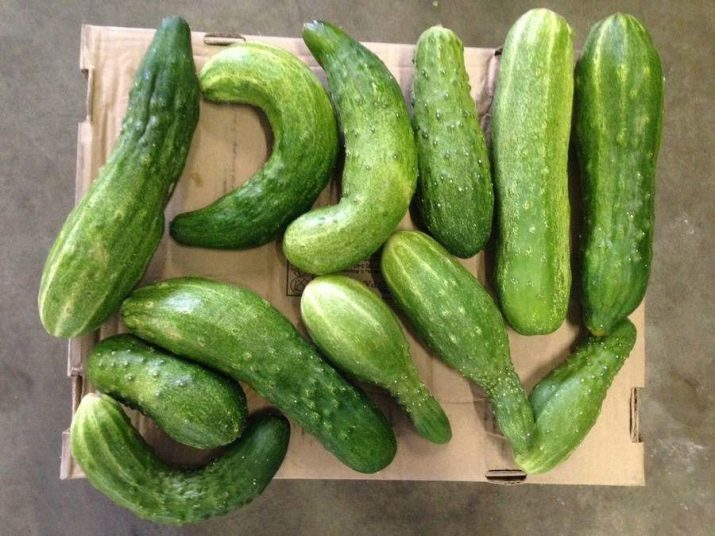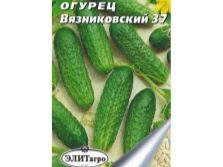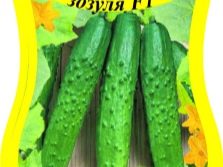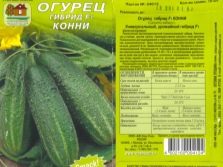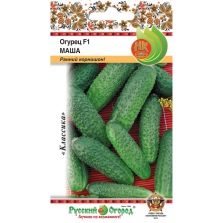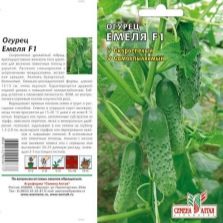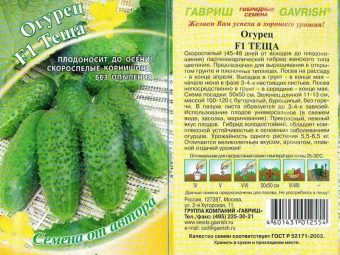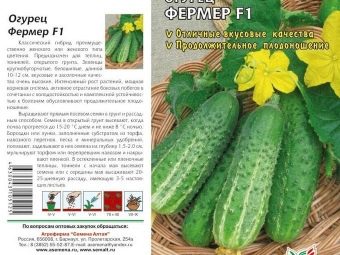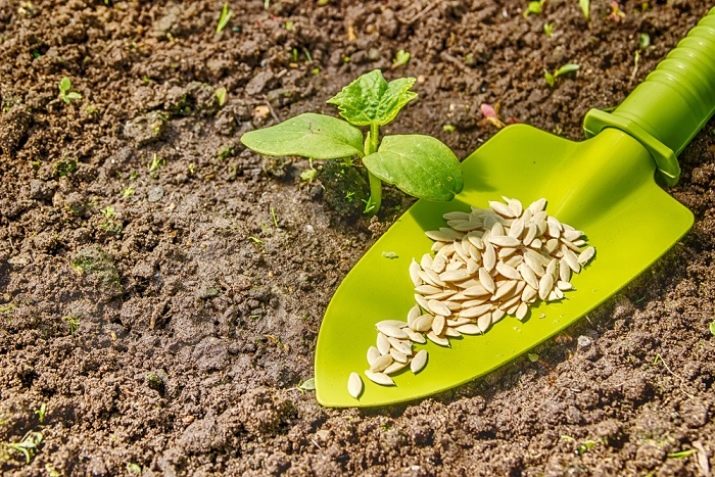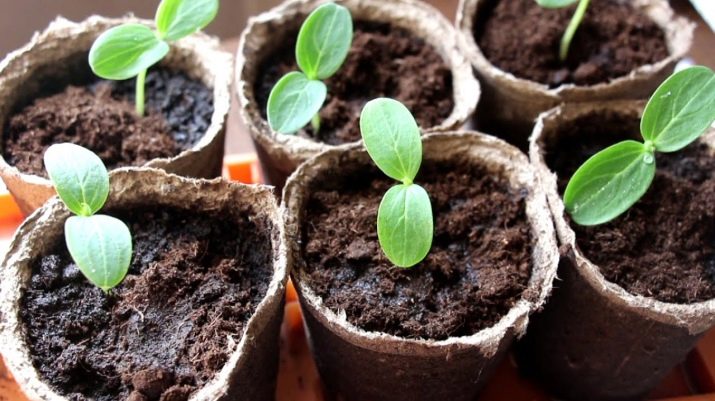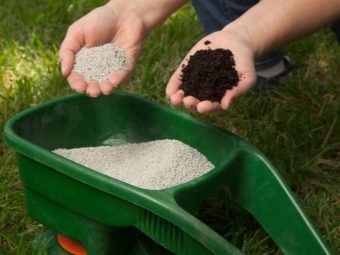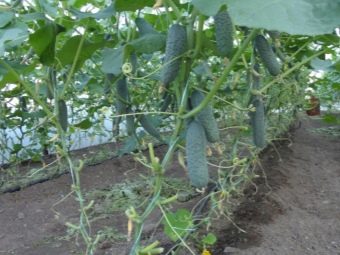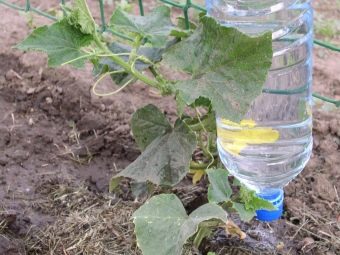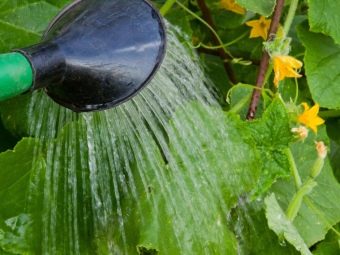Parthenocarpic cucumber: what kind of "fruit" and by what criteria to choose it?
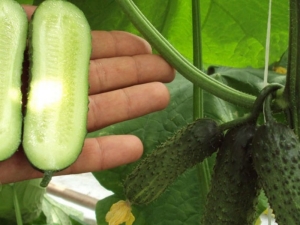
Today, a huge range of vegetable varieties is presented to gardeners, each of which has unique characteristics. As for such a culture as a cucumber, among the plant's types, it is distinguished not only by the size and taste of the fruit, but also by the rather specific abilities of fruiting. This applies to parthenocarpic cucumbers.
Description
Traditional cucumber varieties are still in demand among domestic gardeners, however, crops that can bear fruit without pollination by insects are no less in demand. This is especially true for regions where the cultivation of vegetables for the most part occurs in greenhouses and greenhouses, for example, in central regions or in Siberia. Now there are two types of such cucumbers - parthenocarpic and self-pollinated. It is the first option that stands out for its positive features, in the light of which it is necessary to have a clear idea of what follows from its name in order to grow a truly productive crop in the open field or in a greenhouse.
First of all, it is necessary to understand that the concepts of self-pollinated and parthenocarpic cucumbers denote completely different types of plants. The difference is due to the fact that the first type of culture has flowers that have the ability to self-pollinate, and cucumbers have seeds in the pulp. In the second case, the bushes form fruits without pollination, in addition, there are no seeds in the greens.
Non-pollinated cucumbers are most often cultivated in greenhouses, where pollination of cultures by insects is quite a challenge, and artificial methods of pollination of cultures are rather labor-intensive for gardeners. That is why parthenocarpic cucumber is widely demanded for greenhouse cultivation.
The word "parthenocapia" has Greek roots, and in translation it means "virgin fruit." Many citrus fruits, fruits and vegetables have similar features, and they are fixed at the genetic level with the help of thermal, mechanical and electromagnetic effects on the plant.
Inflorescences of the female type are involved in the formation of fruits, in percentage terms the probability of fruit set is from 50 to 90%.
It should be noted that in some situations, when parthenkarpiki still form seed, it will be completely incapable of germination and the formation of a bush.
Origin
Initially, similar bush cucumbers were found in the wild in Japan, India and China. Among scientists there were various versions of the ability of wild plants to bear fruit without pollination. Assumptions were made about the influence of temperature values, the level of illumination and other external factors.
In the course of a huge number of studies, it was found that parthenocarpic formation of greens was due to genetic and varietal specificity. And its formation is significantly affected by the environmental factor.
These plants have become of great interest to scientists, so as a result of breeding in the XX century, hybrids of vegetable culture with the same abilities, but artificially grafted, were bred.
Unfortunately, the first-time cultivars obtained were not widely spread among gardeners due to the deficiencies of the greenmen, which carried parthenocarpic bushes. The main disadvantage of cucumbers was their length, which was about 40 centimeters. But thanks to the efforts of breeders, this minus was eliminated, and after some time the bushes could collect the fruits of their usual size.
Botanical features
Hybrids differ in their external characteristics from the usual cucumber bushes in their propensity for a rather lush growth. The stem of the culture is creeping; it can be fixed to a support or cultivated on a trellis.Fruits have a habitual color and shape, therefore, outwardly they are not much different from ordinary greenlings, the length and other characteristics of fruits depend on the type. Zelentsy can be used in food in fresh form, as well as for pickling and canning. In the pulp of cucumber seeds are missing.
Culture stands out for its excellent immunity to diseases, in addition, there are varieties that, in the open field, are capable of producing crops until late autumn. The ability to parthenocarpic fruit formation allows you to select plants with both earlier and late maturation. It is noted that high-yielding hybrid cultures have, as a rule, a rather large ovary.
In addition, cucumbers can be found with both full and partial parthenocarpy. Therefore, there are groups of weak, medium and highly prone to the formation of seedless fruits.
Virtues
In addition to the main advantage of parthenocarpic cucumbers, to produce a wonderful crop without attracting insects for pollination, hybrid cultures have an impressive list of benefits:
- the ability to rapid formation and development;
- due to the fact that insects do not participate in the fruiting of cucumbers, they can be grown not only in a greenhouse or open field, but also in an apartment or house on a windowsill or on a balcony;
- a plant grown in greenhouses is capable of forming green leaves of the correct shape and color, which has a positive effect on the presentation of the crop;
- fruits do not mumble and are not hollow inside;
- Parthenocarpic cucumber is not prone to yellowing due to the fact that the fruit will not form seeds;
- Harvested crop stands out for good keeping quality, due to which it perfectly transports transportation;
- The hybrid has a strong immunity to most diseases.
disadvantages
Despite the impressive list of advantages of high-yielding vegetable crops, they have some drawbacks. They consist in the fact that insects, on condition of planting parthenocarpic cucumbers in the garden, are not able to recognize in them a culture that does not need pollination, therefore these flowers also pollinate. As a result, non-bee-pollinated crops will yield a crop that will consist of unattractive and curved greens, as the fruits will be subject to deformation during development.
Sorta
In order to select the optimally suitable variety of hybrid cucumber, it is first necessary to decide on the time of obtaining the desired crop, since the classification and division into varieties occurs precisely according to this characteristic, as well as the growing season characteristic of a particular species.
Early varieties of parthenocarpic cucumbers:
- "Vyaznikovsky-37" allows you to collect fruit within 50 days after the first shoots. They have a universal purpose, so that they can be eaten not only fresh, but also used for canning. He demonstrates his positive features to a greater degree when disembarking in open ground.
- Hybrid "Kustovoy" it is distinguished by the ability to form large bushes, moreover, the cucumbers of this variety are very tasty.
- "Zozulya" - early-ripening variety with good immunity to major diseases that affect vegetables. Cucumbers are remarkable cylindrical shape, and pimples on the peel are weakly expressed.
- "Competitor" has the best yields. In addition, the early cultures of this variety are well immune to diseases. Usually, cucumbers can be harvested 45 days after germination. Fruits have a universal purpose, and the plant develops equally well both in greenhouse conditions and when cultivated in the beds under the open sky.
- "Moravian Gherkin F1" notable for its small size and lack of bitterness on the palate.
- "Connie F1" it is allocated with the big crops, cucumbers at a hybrid have the form of the cylinder. In addition, plants are rarely affected by infections.
- "Masha F1 "- the variety is distinguished by fruits of small length, as well as by immunity to powdery mildew, recommended for widespread cultivation.
- F1 Murashka - A hybrid, the first crop from which can be obtained about a month and a half after sowing seeds. The hybrid forms bunched inflorescences of long fruiting. Vegetable has a universal purpose.
- "Tom Thumb" allows you to pick cucumbers approximately 40 days after sowing seeds.
- "Benefit F1" can be consumed fresh and canned. Gardeners appreciate this variety for the high taste of the vegetable.
- "Zhavel F1" enters fructification for 50-54 day after a proklevyvaniye of shoots. Refers to cucumbers salad destination. The fruit is distinguished by its smoothness, medium size and excellent taste.
The following varieties of parthenocarpic cucumbers are recommended for growing in greenhouse conditions in winter:
- "Makar F1" has a lot of similarities with the early ripe hybrid "Zozulya". It is noted that during pollination increases its yield.
- "Satin F1" - the variety is popular for growing in small private greenhouses, and in large heated greenhouses for industrial purposes.
- "Emelya F1" - The plant develops in the form of vines, requires tying and the presence of supports. Universally for its intended purpose, and the fruits have excellent taste.
There are varieties that can successfully bear fruit throughout the summer season. These include varieties:
- "True friends F1" characterized by the ability to bear a rather long period not only in the greenhouse, but also in the garden.
- "Mother-in-law F1" it is distinguished by a long phase of fruit formation; in favorable climatic conditions, cucumbers can be harvested before the beginning of September. Fruits measure slightly above average and taste very good.
- "Farmer F1" it is remarkable that it can successfully bear fruit with both methods of formation of ovaries.
Before purchasing planting material of parthenocarpic cucumbers, one should carefully read the instructions on the package, since some crops have a number of limitations due to climatic features of the cultivated area. However, for plants that will be grown in greenhouses, these conventions are not binding.
Growing tips
In greenhouses, seeds of parthenocarpic cucumbers can be sown immediately into the ground, but if they do not have heating sources, you need to wait until the earth warms to +15 degrees, otherwise they most likely will not germinate.
Such cultures are best cultivated by growing seedlings. To perform these works, you need the following items:
- soil mixture;
- Peat pots or plastic cups can be used as containers;
- planting material of the selected grade;
- support for plants.
Parthenocarpic cucumbers can be transplanted into the open ground immediately after the appearance of the first two leaves on the culture. Works on planting seeds should be carried out in early May. Sowing seeds immediately in the ground should be postponed until the end of the month.
Before diving seeds into pots, they need preliminary preparation, which consists of soaking in warm water. Then the seeds are distributed in containers with nutrient soil. Tara with seedlings must be kept at a temperature not lower than +22 degrees.
Place for growing cucumbers in the area should be sunny and fenced from drafts. Culture develops well in light and fertile soil. In order not to be mistaken with the choice of landing time, you can focus on the temperature of the soil, it must warm up to at least +16. Before transplanting to a new place, the seedlings are hardened. These events last about a week. At first, containers with plants are taken out for an hour, gradually increasing the time. The day before transplanting the land in pots with cucumbers must be watered.
Soil on the beds must be fertilized, for this fit natural formulations, such as compost or manure. Prepared and fertilized wells need to be moistened.
The planting scheme is selected individually, there are no strict criteria in this case. After planting the bushes in each well, you must enter about three liters of water.
Culture needs competent care. First of all it concerns the application of fertilizers. It is recommended to feed the vegetables throughout the vegetation phase, using mineral fertilizers. For the first time, fertilizing is done in the flowering phase. The composition can be prepared independently, for this you need 10 grams of potassium, superphosphate and urea, as well as about 200 grams of mullein. All ingredients dissolve in 10 liters of water. To feed cucumbers in the fruiting phase, you can prepare the following fertilizer - dissolve 20 grams of nitrophoska and 0.5 liters of chicken manure in 10 liters of liquid. The final root dressing is carried out with a composition of 20 grams of mineral fertilizer mixed with chicken manure, diluted in 10 liters of water.
As for foliar fertilizers, they are advised to be applied once every two weeks. A solution of urea is well suited for this purpose. Such substances will contribute to increasing yields and proper development of culture. In addition, after spraying, the bushes become resistant to powdery mildew.
When grown in greenhouse conditions, there are situations when the fruiting of cucumbers begins to decline. At this time, the spectacular composition will be a complex mineral preparation for feeding the culture. In addition, greenhouse yields can be increased by installing sources of carbon dioxide. As a good option will be a barrel of fermented manure or grass.
For parthenocarpic cucumbers, watering is very important, since the culture belongs to moisture-loving plants. But experienced gardeners recommend carrying out irrigation with special care in the formation phase of greenery, to avoid an excess of moisture and rotting processes of the root system of the bushes. Watering is carried out every 2-3 days, for 1m2 of the area will need about 5-8 liters of water. It is best to perform late irrigation and water the crops after sunset.
Weeding and loosening the soil are mandatory measures in the cultivation of vegetables, since weeds that grow in the garden beds lead to the depletion of the soil. Some gardeners use a less aggressive pesticide to destroy it, which is urea.
Unfortunately, hybrids also suffer from various diseases and attacks of insect pests, to a lesser extent this is manifested in greenhouses. The development of ailments is most often associated with errors made in the care of the crop, for example, the late introduction of fertilizers, the neglect of the cleanliness of the beds, the overmoistening of the soil.
Vegetable growers recommend a number of traditional methods of treatment and control of diseases and pests.
For the destruction of an insect such as whitefly, used sheets of plywood. The material is painted in a light color, and then treated with vaseline. These baits are located in between the rows.
To cope with fungal infections, in particular, with powdery mildew, the plants are sprayed with copper sulfate. The composition is prepared according to the following recipe: 10 grams of the substance must be dissolved in 10 liters of purified water and the green mass of the culture must be processed. In addition, 1 kg of mullein, dissolved in 9-10 liters of liquid, is a rather effective remedy for the whitish plaque on the foliage. Before spraying, the composition must be drained and applied within two weeks.
Quite serious damage to gardeners brings brown spot. The occurrence of infection occurs due to a decrease in air temperature or when watering bushes with cold water. Culture treatment is performed Bordeaux fluid.
You will learn more about parthenocarpic cucumbers from the following video.

